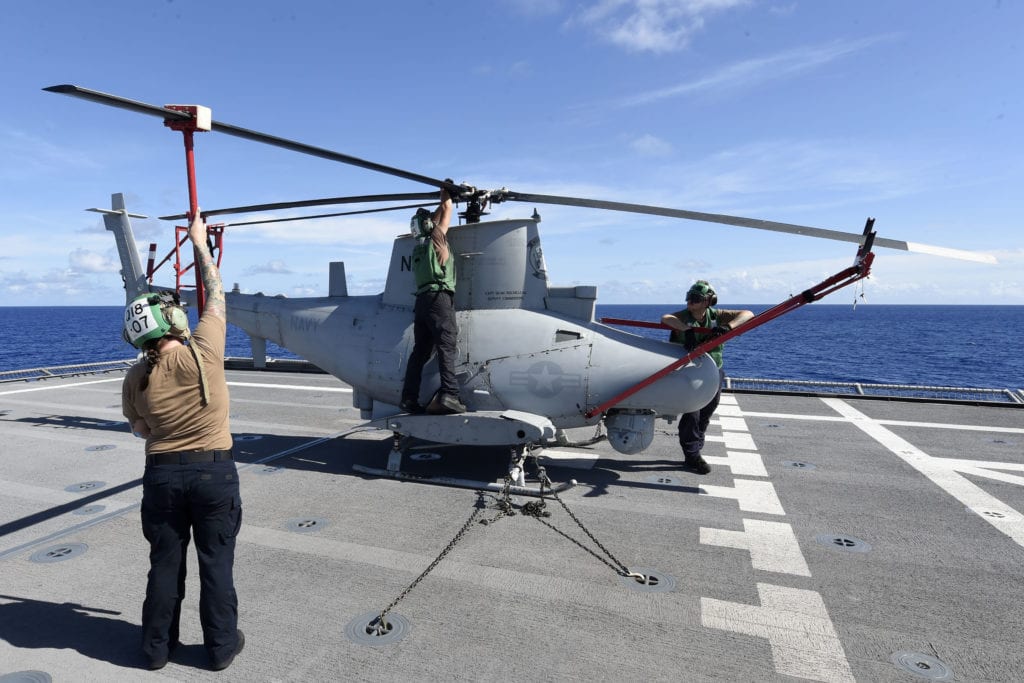
ARLINGTON, Va. — The Navy is very much on board for integrating artificial intelligence (AI) and machine learning into its networks, but human decision makers must always be part of the decision process in warfighting, an admiral said.
“From a warfighting perspective, artificial intelligence subsets would be enablers or augments to the human in the loop,” said Rear Adm. Paul Spedero Jr., director, Fleet Integrated Readiness and Analysis, U.S. Fleet Forces Command, speaking April 8 during a Navy League webinar sponsored by Deloitte. “That has always been our approach. I don’t see that changing. There are some things that can’t be replaced; the experience of a seasoned warfighter in the field being able to assess things that a machine — no matter how much we teach it — may never be able to pick up on. There’s always going to be a necessity for [experience-based decision making]. That necessity for war fighting will never go away — to have a human in the loop.
“AI will be our wingmen,” he said. “It will not be the lead in a fight.”
Spedero said in the world of data analysis, his current focus, there “certainly is a place for AI, particularly machine learning, as we try to get to that predictive and prescriptive level of data analytics. We’re entering into mathematical equations and regressions that just can’t be done manually and algorithms you want [machines] to learn with demonstrated performance and adjust the coefficients within that [so] you can tighten your tolerance and lower your upper and lower limits of variance get closer to each other.”
The admiral, who is on the staff of Adm. Chris Grady, said his office is using data analytics “to identify barriers to force readiness,” to make sure the Optimized Fleet Readiness Plan is working correctly, continually assessing it “to get it right.” He is working to determine the metrics down to the unit level that will define what the readiness of the force is.
Also speaking in the webinar was Dr. Patrick O’Connell, chief digital transformation officer for the Navy, who said as the Navy confronts the challenge of processing massive amounts of data to make decisions, transformation works best when it it is both pushed down from the top of the organization and pushed up from the bottom. Institutional culture is one of the hardest things to change when trying to implement a revolutionary transformation, he said.
- Insitu Going Strong at 30, Focusing on Maritime Operations - April 8, 2024
- Navy Awards Boeing Additional Funds for MQ-25 Drones for Testing - April 3, 2024
- Benign 4th Fleet AOR Useful for Unmanned Vehicle Operationalization, Admiral Says - March 27, 2024






